October 7, 2010
by Amanda Flannery
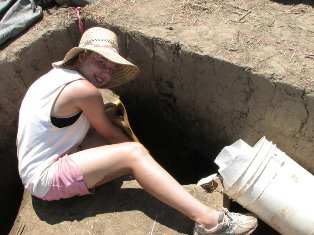
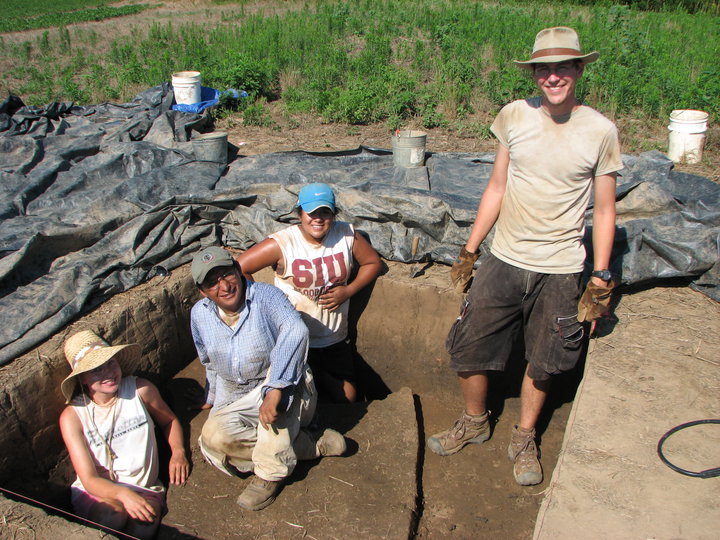
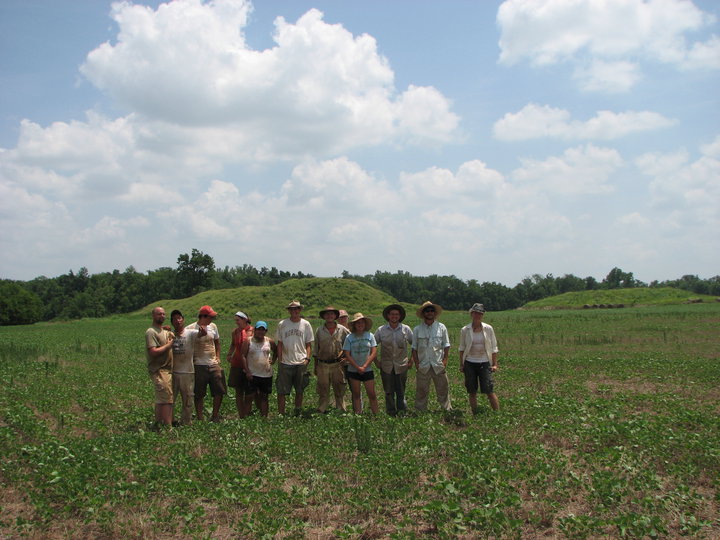
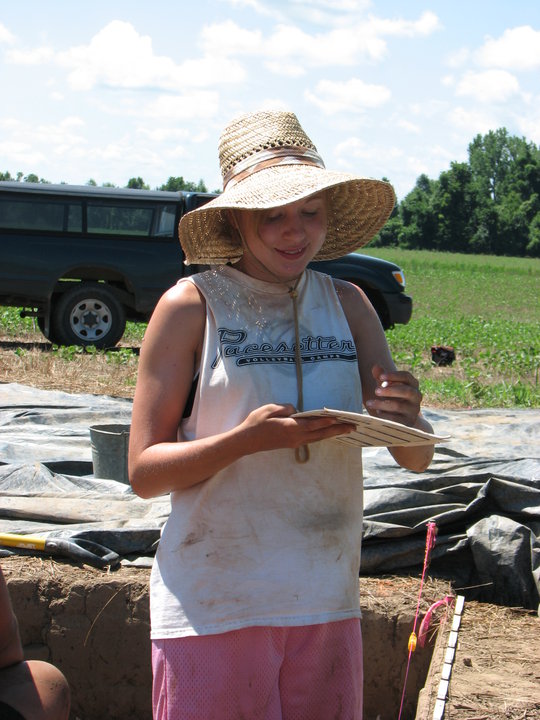
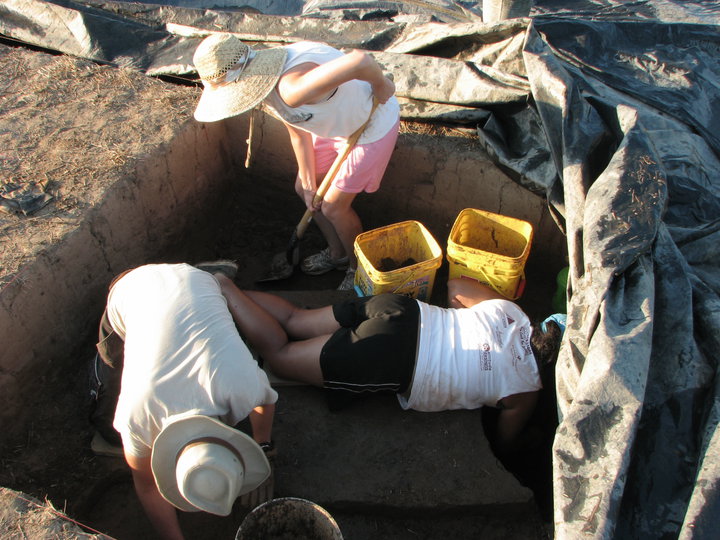
My experience at the Southern Illinois Carbondale field school excavating the Kincaid Mounds was eye opening because it revealed to me the dedication and physical stamina required to become an archaeologist. A person must feel a deep passion for the culture they are studying to be willing to dig for ten hours in the blazing sun every single day. I grew to know that personal commitment through my various learning experiences and through the exploration of the complex Mississippian culture.
There was a crew of fifteen at the Southern Illinois Carbondale field school who occupied the gym in Brookport, Illinois as their living quarters. The members of the crew became quite close because of the limited personal space we learned to cooperate in every aspect from cooking to shower schedule to work in the field. The close bond allowed for the field work to flow smoothly because everyone could anticipate the others needs and could pick up the slack when one member was growing tired. I will cherish the memories of the great friends at field school and I hope to keep in touch with all of them in the future.
A typical day began at six in the morning when everyone met outside to load the equipment into the van and set off down the road to the Kincaid Mounds. Once at the mounds the entire crew would unload the vans and uncover the units to start the digging for the day. Each day a different student would set up the total station so that they would be able to operate the equipment in future archaeological digs and allow for elevations of the units to be accurately recorded. There were several units at different levels of excavation in which a four person group would excavate. The goal of the field school was to discover more information about the Mississippian house structures at Kincaid such as: architecture, size and content. The excavation of the unit was organized by two people digging the unit with shallow shovel scraps until they have brought the unit down ten centimeters. The diggers deposit the shovel scraps into buckets in which the two other people in the group screen for artifacts and record their findings. After the unit was down to the level three members of the group would trowel the surface to prepare the unit to be photographed. After the photograph the group would Munseil test the soil and record the details of the level. When there were features or large artifacts present the group was instructed how to create plan map which I found to be my favorite activity because you can clearly see the work you had done laid out neatly. Then the group would bring the unit down another level and repeat the process. Some of the most interesting finds at the site were an effigy drinking vessel in the shape of a person and several perfectly shaped Madison points. In addition to the work in the field the lab work trained me for identifying types of artifacts and the proper sorting and preservation methods. There were other candid learning experiences that enhanced that my archaeological knowledge such as field trips to other mound sites and museums and informal lectures on CRM work.
The research question pertaining to the contents remains unanswered until further research has been done on the artifacts collected and more excavation takes place but there was a clearer picture exposed from the excavation about the size and spatial layout of the buildings within the village. My personal experience has brought about great advancement in preparing me for CRM work and for the better understanding of the Mississippian culture so much so that I may pursue the research in graduate school. I am sincerely grateful for the AIA for providing such a life changing and rewarding experience the field school has transformed me into true archaeologist.